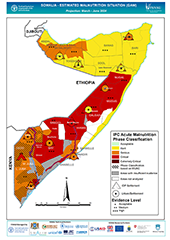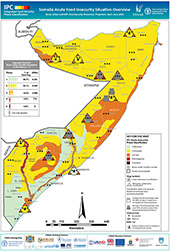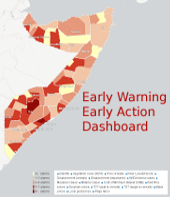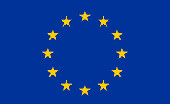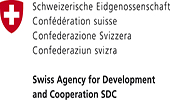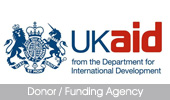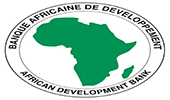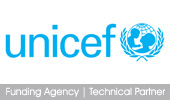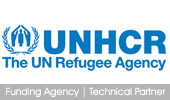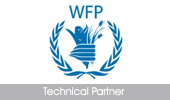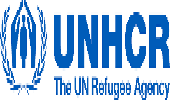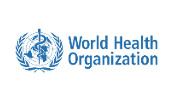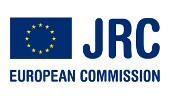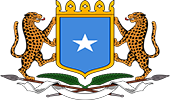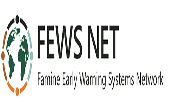Press Release: Somalia faces severe water crisis as drought looms
Issued: January 28, 2011
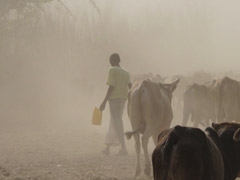 NAIROBI, January 28 – Somalia is facing a severe water shortage following failure of the short rains also known as Deyr, heightening fears of deepening humanitarian crisis in coming months, a new report shows.
NAIROBI, January 28 – Somalia is facing a severe water shortage following failure of the short rains also known as Deyr, heightening fears of deepening humanitarian crisis in coming months, a new report shows.
Seasonal analysis by the Food Security and Nutrition Analysis unit (FSNAU), managed by the Food and Agriculture Organization (FAO) in Somalia, in collaboration with FEWSNET, indicates that the failure of short rain season dwindled water sources for both human and livestock in most areas, leading to crop failure and subsequent increase in prices of water and local cereals.
“Although poor rains are a normal part of the climatic seasonal pattern in Somalia, and are experienced, on average, every 5 years, when the population is already dealing with other shocks such as conflict, displacement, limited access to basic services and limited opportunities for income, even one poor rainy season is enough to put a poor household into crisis,†said Grainne Moloney, FSNAU’s Chief Technical Advisor.
Most agro-pastoral areas in southern Somalia traditionally rely on rainfall for subsistence farming and survive from one harvest to another increasing their vulnerability to unpredictable weather. Moloney said there is need for interventions focused on helping farmers mitigate erratic weather and to reduce their vulnerability. The report also highlights dramatic increases in local cereal prices, up to 80 percent especially in Southern regions of Somalia, where large scale crop failure was reported as a result of failed rains. Sorghum and maize are preferred choice of food for poor households and the internally displaced population. Farmers and traders are also reportedly hoarding cereal in anticipation of food shortages, hurting the poor most.
Findings also indicate increased malnutrition levels in southern regions, especially in Juba and Gedo due to a combination of lack of clean water-leading to diarrhoea-and reduced access to milk as livestock migrate in search of water and pasture. Children below 5 years are normally the first group affected when food is reduced at the household level. One in four children in southern Somalia are acutely malnourished.
“Of great concern, is the deterioration of the nutritional status in the IDP population in Afgoye, outside Mogadishu, where the highest levels of acute malnutrition have been recorded since the establishment of the IDP settlements in early 2007,†she said.
The deterioration to 21% from 15%, of the number of acutely malnourished children, in the last six months, is due to the limited opportunities for income and limited agricultural labour. These levels of malnutrition are among the highest in the world.
According to the report, the number of people in need of emergency humanitarian assistance has increased by 20 percent to 2.4 million due to continued civil insecurity and displacement and food insecurity partly due to poor rains. This represents 32 percent of Somalia’s 7.5 million people. The UN estimates that there are 1.46 million IDPs in Somalia where there has not been a functioning government for two decades.
“It is crucial to note that some households in Lower Shabelle and Bay still have carryover cereal stock from the bumper harvest of the last Gu season (April-June 2010) which was characterised by good rains,†said Moloney adding, “In fact, the annual crop production for 2010, combining the two seasons, is at average levels.â€
In 2010, Somalia exported 4.2 million animals, highest export volume ever recorded, through the seaports of Berbera and Bossaso. This comes after Saudi Arabia lifted a ban on the import of livestock from Somalia in 2009 imposed nine years earlier to prevent the spread of diseases. But the sector remains most threatened by the water crisis given the high water and fodder requirements for cattle and sheep. Cattle and sheep pastoralists are predominantly found in central regions and Juba regions where livestock deaths are already being recorded. Livestock had benefited from the Gu season and had started calving at the beginning of the Deyr, however now herders are culling the calves to save the mothers and milk production has significantly reduced. Camel and goat pastoralists in Juba, Gedo, Central and Northern regions are also affected but are able to migrate. Body conditions of goats are deteriorating rapidly. Cattle markets in Juba regions have collapsed following plummeting prices as herders frantically move to dispose their stocks.
